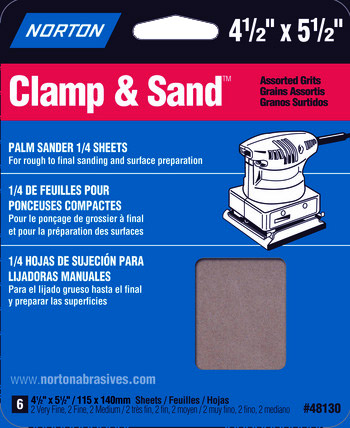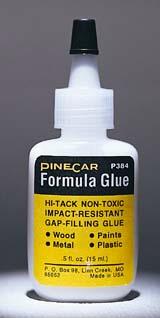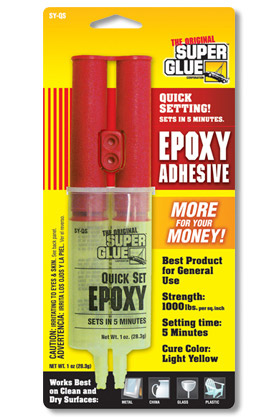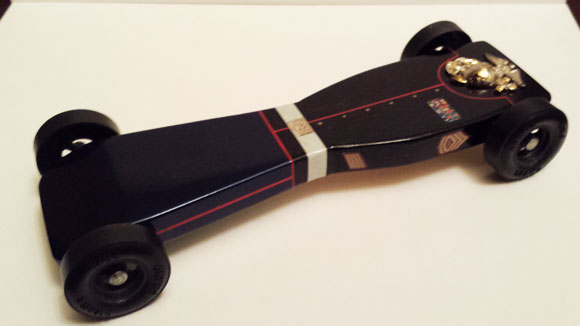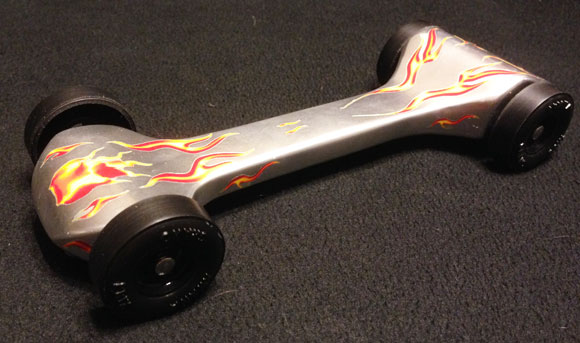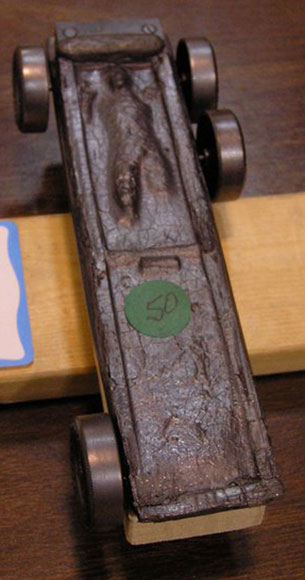– Feature Article – Tools of the Trade
– Humor
– Pinewood Derby Car Showcase
– Memory – Competition Among Friends
– Q&A
Feature Article
Tools of the Trade
Anytime you get involved in a sport or hobby, some specialty equipment is needed to help you achieve your goals. Baseball players need a glove, bat, and ball. Skiers need skis, poles, and warm clothing. R/C airplane enthusiasts need specialty tools, fuel dispensers, radio equipment etc.
The same is true in pinewood derby racing. Fortunately, success can be achieved without spending serious money, and in fact people have successfully built pinewood derby cars for years with few tools. But having the right tools (and knowing how to use them) makes the job simpler and more enjoyable, and the results at the track are generally better.
In this article I will describe the woodworking tools that are most commonly used for building a pinewood derby car. In a future article I will describe the key specialty tools that were designed specifically for pinewood derby car building. As each tool is described, I will note whether the tool is required or optional.
For some of the tools I have included links to the Rockler Woodworking web site. Rockler sells top quality products, so naturally their prices are not cheap (likely you can find the tools locally for a better price).
Saw – At least one saw is required
Coping Saw
Source: Rockler
The most versatile saw for pinewood derby building is the Coping Saw. The Coping Saw is designed for cutting curves in relatively thin material, so it is excellent for cutting the outline of a car body as viewed from the top of the car. The Coping Saw does not work as well for cutting thick material, so it is nice to have a more general purpose saw for cutting the material off of the top of the car.
Here are some general suggestions for sawing.
- Start the cut by making short gentle strokes. When the saw is firmly in the wood, take long even strokes.
- Go slowly, and watch carefully to make sure the cut is staying in line. If the cut is wandering, either back up and start again in the right direction, or start the cut from the opposite side.
- When cutting completely through a block of wood, place a scrap piece of wood tightly against the side of the block from which the saw blade will exit. This minimizes the amount of chipping at the saw exit point.
Drill And Bits – A hand drill and some basic drill bits are required
For weight holes, I strongly recommend the use of “Brad Point” or “Forstner” drill bits. These bits are designed to cut clean holes in wood. Auger bits are nice, but the long threaded tip is not good for the precise needs of derby cars. Spade bits cause excessive chipping, and standard drill bits tend to chip and wander.
Here are some general tips:
- Clamp the wood block in place. Don’t attempt to drill with one hand while holding the block with the other.
- Drill straight down with the drill no higher than chest level. If needed stand on a step stool to get the needed height.
- Use steady, even pressure on the drill. Pushing too hard can result in deeper holes than desired.
- When drilling completely through the block, put a scrap piece of wood underneath the block. This will minimize chipping at the drill bit exit site.
- To remove the drill bit from a hole, pull upwards and start the drill.
Chisel – Optional
Wood Chisel
Source: Rockler
Chisels are used when creating a square or rectangular hole or cavity in a car, such as when creating a cavity in the bottom of the car for holding lead, tungsten cubes, etc.
Here are some general tips:
- If at all possible, remove most of the wood with a drill.
- Use a hammer and chisel to make the first chisel cuts around the edge of the hole being chiseled. Tap the chisel gently, and remove a small amount of wood at a time. Taking too big of a bite can cause the wood block to split.
- Use the chisel by itself to pry and cut out any wood in the center of the hole.
- When removing a thin shaving, a hammer is not needed. Just push the chisel with steady pressure.
- Keep the chisel sharp to avoid splitting the wood, and most importantly,
- Keep all body parts away from the cutting edge!
Rasp – Optional
Wood Rasp
Source: Rockler
A rasp is a rough file that is used to shape the wood after it has been rough cut with a saw. Rasps are either half round or flat. I recommend the purchase of a “4-in-1” (a.k.a. “Shoe Rasp”). The 4-in-1 Rasp has four different surfaces on one tool. Two of the surfaces are flat, and two are rounded; two of the surfaces are rough rasps, and two are fine rasps. Thus, this one tool is very versatile.
Here are some general filing tips:
- Files only cut on the push stroke, so use most of your energy pushing, not pulling.
- To keep the file working properly remove the sawdust from the file teeth occasionally. A “File Card” or a wire brush can be used for this job.
- Use flat files to shape flat surfaces and outward-curved surfaces. Use rounded files to shape inward-curved surfaces.
- A small triangular file is useful for shaping the lines of complex car bodies. This tool, or a small rectangular file, are required for removing the burrs on nail-type axles.
Sandpaper – Required
Sandpaper Assortment
Source: Maximimum Velocity
Sandpaper is used to smooth the surface of the wood before painting. Sandpaper is rated in “grit” with the number identifying the roughness of the paper. Smaller numbers indicate rougher paper. Sandpaper also comes in different styles, as it can be used on metal and wood. However, most styles will work on wood.
Sanding tips:
- Start with rough paper, and then progress to finer paper. A good progression is 60, 120, 220, and 400.
- For sanding smooth, flat surfaces, use a Sanding Block. This is a
- Sand back and forth in the direction of the wood grain. On the end of the car, sand in a circular motion.
- To sand inside a body hole or a small surface, use a piece of sandpaper taped to a small flat object (Popsicle stick, small ruler, etc.).
- To sand inward curved surfaces, use a piece of sandpaper wrapped around a dowel rod (or piece of broomstick).
- Between coats of paint, lightly sand the car with 600 grit paper. This sandpaper is also excellent for polishing the wheel tread (use it wet).
Glue – At a minimum, have some white glue
White Glue and Epoxy
Source: Maximimum Velocity
Glue comes in several different types. Always use the proper glue for the job.
- Use “Wood Glue” (yellow glue) or white glue when gluing wood to wood, for repairing chips and cracks, and for gluing the axles in place.
- Use epoxy when gluing non-wood parts to wood. For example, use epoxy for gluing weights to the car. This is especially important if weight is suspended under the car. Epoxy is also used for gluing plastic or metal decorative parts to the wood body.
- Only use super glue for an emergency repair during a race.
- Avoid any expanding glue such as “Gorilla Glue”.
Clamp – One clamp is required
F-Clamp
Source: Rockler
Woodworkers say that you can never have too many clamps, and building a pinewood derby car is very difficult without one or two. The main use is for holding the car in place while drilling and sawing. The other use is for clamping a hand drill in place while preparing the wheels and axles.
I like to use F-Clamps. This is combination between a Bar Clamp and a C-Clamp. It has the reach and screw-tightening of a C-Clamp, but has the benefit of quicker and wider adjustability similar to a Bar Clamp.
Conclusion
Having the right tools greatly simplifies the task of building a pinewood derby car. When we first started building cars, we had a few tools. As the years went by, and our experience grew, so did our supply of tools.
So, for beginners, I recommend purchasing/borrowing all of the tools listed above as “required”, and possibly a few of the optional tools. Then next year, get a few additional tools. Before long, you will not only be an expert pinewood derby builder, but you will also have the “Tools of the Trade”.
Humor
A high-school geometry teacher started a lesson on triangles by reading a theorem. “If an angle is an exterior angle of a triangle, then its measure is greater than the measure of either of its corresponding remote interior angles.”
He noticed that one student wasn’t taking notes and asked him why.
“Well,” the student replied sincerely, “I was waiting for you to start speaking English.”
Pinewood Derby Car Showcase
The Few, The Proud… – Matt Penza
The Marine car took Grand Champion in the derby. My daughter came up with the concept after seeing my uniform.
The Flame – Stacy Bodder
My son, Joel Bodder was in his first pinewood derby race tonight; he came in first for speed. It was an exciting race. In one of the races, Joel’s car hit a piece of dirt in the track and jumped up and landed sideways, but won the race crossing the finish line sliding sideways!
Carbonite Cruiser – Justin Roberts
In honor of the release of the Star Wars movie, here is the Carbonite Cruiser we built back in 2011! Of course, it was a winner!
Pinewood Derby Memory
Competition Among Friends
My son Trey is a Tiger Cub so the pinewood derby is new to him. It is also a lot more competitive than when I was a scout. Along with helping Trey build his first car, I was roped into helping two of my friends with three cars for their sons (Chris, his brother Will, and Tyler). I really worked at making this a learning experience for the boys. They polished wheels and axles, and cut out the car shapes with help from the dads. The boys also sanded as if the world championship was at stake.
All the boys talked about was how they all were going to go to the district championship (the older boys explained the district race to Trey, so he decided he would be going also). For the older boys this was going to be their big year because they were tired of losing to the same three district qualifiers each year. Fortunately, Tyler raced in a different pack. He in fact won his pack race and went to districts.
My problem started when the other three (including my son) all won their den races and were ready to duke it out in the final for the three district qualifier spots. The first three rounds they all advanced easily. But in the fourth round Trey had to race against Chris. Chris won the first heat by a few thousandths of a second. Then Trey won the second race by a few thousandths (both moms wanted to quit right there so that everyone would still play together). Well, Chris won the third heat and advanced. Trey raced his way back through the loser’s bracket only to face Chris again for 3rd place. The three races were identical to the first, with Chris picking up the last spot for districts and Trey placing 4th overall.
To make matters even worse, Will took 1st place and Tyler took 2nd place so all three of the other boys went to the district championship. Trey was a very good sport in the whole situation, but he reminds me often: “Dad. Chris, Will, and Tyler have to build their cars by themselves next year. Okay?”
Bill Launius
Millstadt, IL
Q&A
I don’t have any questions from readers at this time, so here is some Q&A on weighting from our website.
Why do I need to add weight to my pinewood derby car?
If there were no friction or air resistance, then added weight would not be needed. But since friction (and to a lesser extent, air resistance) exists, weight is needed to help your car overcome friction. This is especially important on modern tracks which have an initial slope followed by a long flat section. On this type of track, the pinewood derby car reaches its maximum speed at the bottom of the hill, and then begins to slow down. Without added weight, the car will slow down much more quickly.
What is the best weight for pinewood derby cars?
For cars with less than one-half of the original block remaining, lead or tungsten weight is generally required. For minimalist cars (very little wood), tungsten is generally needed to attain proper weight. For cars with one-half or more of the block remaining, then steel or zinc will work fine.
What is tungsten?
Tungsten is a metal with one of the highest densities. It is 1.7 times heavier than lead. Only gold, platinum, and a few other rare and expensive metals have a similar density. Tungsten is non-toxic and environmentally friendly so it is gaining increased use in weighting applications where lead is not appropriate. For example lead has been banned in many streams, so tungsten is often substituted for lead weight on fishing flies.
Can I drill, melt, or reshape tungsten?
Not easily. Tungsten has the highest melting point of all metals in pure form: 3422 Deg C, 6192 Deg F. To cut or drill tungsten generally requires diamond cutting tools. So, I recommend using the appropriate shape of tungsten, and creating pockets or holes in the pinewood derby car to accept the tungsten weight.
Is lead safe?
Lead can be toxic if taken internally. However, if handled and used in a safe manner, the health risk is quite low. Here is our safety information:
Lead can be toxic if taken internally. It is sold to adults as ballast weight for pinewood derby cars. It is not sold for use by children.
To minimize risk when using lead:
- Keep lead away from your mouth,
- Wash hands after handling lead,
- Avoid use around water, food, or food preparation areas,
- Properly dispose of any lead fragments,
- To minimize lead fragments, cut lead with cutting pliers; do not use a saw to cut lead,
- Avoid sanding lead with sandpaper,
- Do not melt lead as the fumes are toxic and the lead can pop and splatter, causing eye and skin injuries.
Why do you not offer a greater variety of PineCar weights?
Most PineCar weights are made of zinc, which is a metal with a very low density. This low density makes proper weighting difficult to impossible on cars made of less than one-half of the wood block.
What is the best location for added weight?
Added weight should be placed such that the final balance point of the car is between 3/4 and 1 in front of the rear axle (can be closer if rail-riding). To achieve this balance point, a good “rule of thumb” is to place of one-third of the added weight behind the rear axle, one-third on top of or just in front of the rear axle, and the final third about one inch in front of the rear axle.
Is it better to put the weight high or low on the car?
Low weight is slightly better, as it gives the car greater stability.
What do I use if I don’t have time to buy weights?
If you are in a jam, use pennies, or steel screws and washers.
Want Answers?
Do you have a pinewood derby-related question? If so, e-mail us your question.We answer all questions by e-mail, but not every question will appear in the Q&A section of the newsletter.
Back Issues
Are you a new subscriber, or have you missed some of the previous newsletters? Don’t miss out; all of the issues for Volume 5 through Volume 17 are posted on our web site.
Newsletter Contributions
We welcome your contributions. If you would like to contribute an article, a web site review, a speed tip, or a pinewood derby memory, please e-mail us.
Subscription Information
The Pinewood Derby Times is a free e-newsletter focused on pinewood derby racing. It is published biweekly from October through March.
If you haven’t already done so, please forward this issue to your pinewood derby friends. But please don’t subscribe your friends. Let them decide for themselves. Thanks.
If this newsletter was forwarded to you, why not subscribe to receive this newsletter. There is no cost, and your e-mail address is safe, as we never sell or share our distribution list.
To subscribe, send a blank e-mail to
[email protected]
You will receive a confirmation e-mail. Reply to the confirmation e-mail and you will start receiving the Pinewood Derby Times with the next issue.
Randy Davis, Editor, Pinewood Derby Times
E-Mail: [email protected]
(C)2018, Maximum Velocity, Inc. All rights reserved. Please do not reprint or place this newsletter on your web site without explicit permission. However, if you like this newsletter we grant permission, and encourage you to e-mail it to a friend.
Maximum Velocity disclaims any personal loss or liability caused by utilization of any information presented in this newsletter.
The Pinewood Derby Times is not specific to, and is not affiliated with the Boy Scouts of America, YMCA, Awana, or any other organization.
(R)Maximum Velocity is a registered trademark of Maximum Velocity, Inc.
(R)Pinewood Derby is a registered trademarks of the Boys Scouts of America.
(R)Awana is a registered trademark of Awana Clubs International.
All other names are trademarks of their respective owners.





